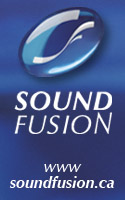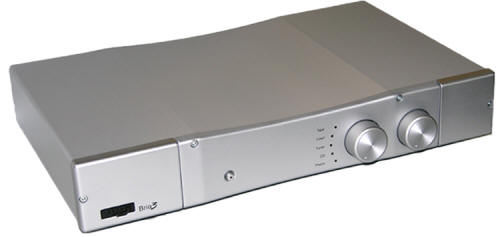
You are reading the older HTML site
Positive Feedback
ISSUE
28
rega
Brio 3 integrated amplifier
as reviewed by Ed Kobesky

 |
|
|
You are reading the older HTML site
Positive Feedback
ISSUE
28
rega Brio 3 integrated amplifier as reviewed by Ed Kobesky
|
|
|
Somewhere in China, a perfectly nice person is designing a perfectly nice integrated amplifier. It'll probably have a really thick faceplate, a hefty transformer and shiny chrome knobs. A few months from now, someone will review it and marvel at how it looks and sounds far more expensive than it really is. This will happen approximately 2000 times with different American reviewers and Chinese-made products. Don't get me wrong. I have nothing against Chinese-made hi-fi products. It's just that lately, I can't tell the Cayins from the Shanlings. They all seem to be screaming, "Look how heavy I am!" or "Look at my blue LEDs!" That's why it was so refreshing to receive the latest version of Rega's British-made, entry-level integrated amplifier, the Brio 3 ($645). It's obvious that someone who loves music engineered this amp, which is altogether different than someone who loves engineering. The British-born Brio 3 boasts several improvements over the pervious model, most notably a larger transformer and improved power supply design. Output is up from 38 watts per channel to a healthier 49. It's surprisingly light—I can pick it up with one hand – but the trademark Rega clamshell case is very rigid. No remote control is supplied; if you want one, you'll have to pony up $1095 for the 60-wpc Rega Mira. On the upside, an outstanding moving magnet phono section is standard, and it's better than some standalone preamps I've heard. In keeping with Rega tradition, the Brio 3 is a no-frills design. There are no tone or balance controls, nor is there a headphone jack. You won't find any fancy, WBT-type speaker terminals around back, either. (When you're paying workers a living wage, something's gotta give, and in this case, it's any feature that doesn't directly improve the sound quality.) Those omissions may well contribute to the overall cleanness of the Brio's sound. Right out of the box, it exhibited an uncommon clarity and relative lack of grain from the upper midbass on up. Be forewarned: If you like your music warm and tube-like, this is not the amp for you. If, however, you're a fan of other classic British amps like the Cyrus Two and Onix OA-21S, then you'll love the Brio's lively character. The tenacious way in which it locks onto individual instruments would be remarkable enough in this price range, were it not for the fact that it does so without sounding clinical. It's almost as if the Brio knows exactly which parts of the music need the most attention—an eloquent design compromise if ever I've heard one. While you're sacrificing a certain amount of low bass information, the tradeoff is exceptional transparency right where it counts: in human voices that sound really present, in cymbals that don't come off as sizzly or sandy, and in acoustic guitar and piano notes that are round and complete. I heard far more inner detail from the Brio 3 than I anticipated, with some expected coarseness and compression accompanying dynamically challenging passages. Unlike the Cambridge Audio Azur 340 that I reviewed here, the Brio 3 doesn't tolerate poor-quality source components, particularly digital ones. I used it primarily with Rega's recently released Apollo CD player ($995) and my own 1980s-era Planar 3 turntable. That's not to say you couldn't use it with a good budget CD/SACD changer like Sony's $150 SCD-CE595, but I would certainly avoid a mass-market DVD player as a source unless you add an outboard DAC. I tried the Brio with DVD players from Phillips and Sony and it did nothing to mask their muddy midbands, noisy backgrounds and grainy top-ends. Compared with far more expensive integrated amps like the PrimaLuna ProLogue Two ($1445), the Brio 3 doesn't offer the same effortless musicality. It seems to be working harder and comes off a bit overeager and forward sounding in the process. However, contrasted with the aforementioned Cambridge Audio 340A ($369), which is slightly less powerful, the Rega seems more energetic and mature. As a result, it requires a more thoughtful approach to system building than either of those two. It sounded lean and strident with a pair of B&W DM302 monitors (discontinued; $300 when last offered, now replaced by the DM303) but got on well with the laid-back, floor-standing PSB Alpha T ($549; replaced this year by an improved model). Then there's Rega's own R1 loudspeaker. A bargain at $495, this small monitor comes wrapped in rich-looking, genuine rose nut veneer. The drivers are manufactured in-house, where final cabinet assembly also takes place. Only one set of binding posts is supplied, as Rega engineers felt the additional expense of bi-wiring would offer little or no improvement. These are small, relatively unfussy speakers, with narrow front baffles that help them disappear aesthetically as well as sonically. No matter how haphazardly I placed them, they still delivered the same core virtues: exceptional transient response, solid imaging, transparent midrange and sweetly extended high frequencies. Like the Brio, the R1 is not especially forgiving—despite its reasonable price tag, this speaker has real high-end swagger. What it also has is a lean, limited low end. Rega does not specify frequency response, but in my room, bass response took a dip starting at about 80Hz and rolled off sharply after 75Hz. Placing the speakers closer to the rear walls provided some extra reinforcement, but compromised the remarkable soundstage. Many will undoubtedly feel that the music lacks foundation, or that the sublime midrange sounds spookily disembodied. Others will delight in their strengths, which mirror the classic BBC LS3/5a in some respects. One thing is for sure: the Brio 3 and R1 make music that demands your attention. Those looking for polite background sounds need not apply. Likewise, anyone searching for audio jewelry will be disappointed by the minimalist, unassuming design of these units. This is sensibly priced hi-fi at its best: simple, single-minded and affordable. Ed Kobesky
Rega
The Sound Organisation
|